

Ever call a service provider only to get bounced between departments, retelling your story to every new agent, each one promising a fix that never comes? You hang up frustrated, unheard, and uncertain.
This same dynamic plays out in higher ed every day. A prospective student tells an admissions counselor, “I need to finish my graduate degree in one year.” That context gets lost in the handoff. The student success team never hears it. Course sequencing doesn’t line up. Frustration builds. Momentum stalls.
That isn’t just a communication slip. It’s a broken promise.
Too often, institutions treat the student journey as a series of separate phases — marketing handles outreach, admissions manages enrollment, and student success supports retention — but students don’t experience their education in phases. They experience it as one journey.
And when we don’t design for that, we create invisible gaps that undermine trust, break continuity, and erode outcomes.
This isn’t a marketing problem. Or an admissions problem. Or even a student success problem. It’s an alignment problem.
The real challenge is that internal teams aren’t playing from the same sheet of music. Without shared data, shared metrics, and shared goals, it’s impossible to have a meaningful conversation about where the student journey breaks down.
It also makes improvement feel like guesswork. One team pushes harder on applications. Another tries to boost first-term persistence. But without a full-funnel view, efforts remain disjointed and hard to scale.
To grow enrollment and retention sustainably, you need institutional alignment around the full journey, from first click to graduation.
A full-funnel strategy doesn’t just connect dots — it puts everyone on the same map. Sustainable enrollment growth requires moving beyond early-stage efforts and focusing on a unified enrollment strategy that carries a prospective student from interest all the way through graduation. That means marketing, admissions, and student success teams need to share the same data, vision, and goals. Here’s what that looks like in practice.
Replace handoffs with collaboration. That means shared access to student data, from first inquiry to graduation. When teams see the same big picture, outreach becomes more relevant, timing improves, and support gets proactive.
Institutions need to establish a single road map that charts the student journey from inquiry to enrollment to graduation and attach measurable goals to each phase, such as enrollment yield, first-term persistence, and long-term retention rates. A shared scorecard keeps the discussion focused on the big-picture student journey, rather than team silos.
This shared dataset should be analyzed to detect patterns and trends. Where are students dropping out of the funnel? Which programs retain the best-fit learners? Which messages produce the best engagement? The insights you glean from your analysis can help you tweak targeting and support.
Retention starts with recruitment. When marketing and admissions teams are aligned with student success, they can spot patterns of persistence and adjust targeting accordingly. It’s not just about getting more students in the door — it’s about attracting students who will thrive.
Yes, it means more meetings, but structured, purposeful alignment sessions across departments can surface insights you’d otherwise miss. Better yet, tie every meeting to shared key performance indicators (KPIs) and use that data to drive strategy.
Modern customer relationship management (CRM) platforms give you visibility into every stage of the funnel. Real-time reporting and alerts enable teams to identify issues — where students are disengaging, where more support is needed, which outreach messages are failing to resonate — and respond quickly before they become systemic.
Strong retention doesn’t begin in week eight of the semester. It begins the moment a prospective student clicks “Learn More.” Strategies for success include the following:
When you design a journey that prioritizes clarity, continuity, and fit, your enrollment and retention numbers start to reflect that.
With the value of higher ed under scrutiny and students facing more choices than ever, institutions must start treating the student journey like a customer journey.
That means designing around measurable satisfaction at every stage. Rallying around shared information. And giving every team a role in both the promise and the delivery of student success.
Because when students fall through the cracks, they don’t just feel confused. They feel let down.
Enrollment growth requires an end-to-end student journey approach, not a single-stage fix.
Full-cycle planning drives stronger enrollment and better retention.
Alignment among internal teams is the foundation for sustainable results.
At Archer Education, we partner with institutions to connect marketing, enrollment, and student success into one seamless journey. We help you build full-cycle strategies that grow enrollment, increase retention, and, most importantly, deliver on your promises to students.
Ready to start the conversation? Let’s talk.
Contact our team to learn more about our tech-enabled strategy, marketing, enrollment, and retention services.
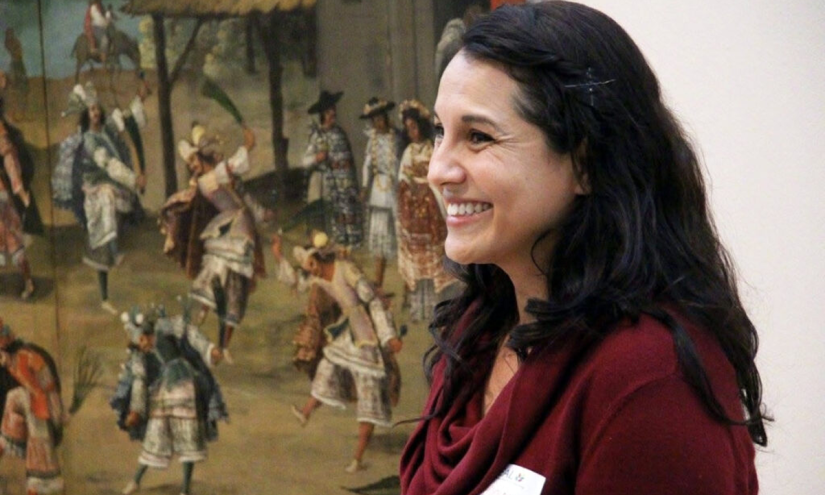
Get stories like this delivered straight to your inbox. Sign up for The 74 Newsletter
Veronica Alvarez was 4 when her family came to the U.S. from Cotija in Michoacán, Mexico, a small town famed for its cheese. Her father picked avocados amid the scorching heat in the San Fernando Valley, while her mother cleaned houses. One of nine children, she learned how to scrimp and save, how to work hard and how to dream big.
“We were so poor, I knew not to ask for much,” said Alvarez, 52, now executive director of Los Angeles-based Create CA, one of the state’s leading arts education advocacy organizations. “Looking back on those years now, I don’t know how my parents did it. I have a white-color job and two sons, and I can barely afford it.”
Her sunny disposition belies a steely resolve. She remembers well the sting of being an undocumented immigrant in the age of Gov. Pete Wilson, an era when some felt ashamed to even speak Spanish in public. She brings that fire to her arts education mission.
“I believe access to the arts is a social justice issue,” as she puts it.
“Unfortunately, students that have the most need do not get equal access and opportunities.”
Her chops as a fighter, someone who doesn’t give up on a cause, are part of what makes her special, arts advocates say.
“Veronica is an inspiring and dedicated arts education advocate and leader,” said Merryl Goldberg, a veteran music and arts professor at Cal State San Marcos, who also serves on the Create CA board. “Her commitment to equity and lifting student voices is front and center.”
Alvarez didn’t become fluent in English until about the fourth grade, but she instinctively understood that education was the key to escaping poverty.
Education was my path out of poverty. That was always my thing. I loved school.
Veronica Alvarez
The only one in her family to graduate from high school, for her, school was always a matter of sink or swim. She chose to dive deep. She paid her way through college working at Chuck E. Cheese, where she honed her chops in engaging children.
“I’ve always been pretty driven,” said Alvarez, a mother of two boys with a doctorate in education and a master’s in ancient history. “Education was my path out of poverty. That was always my thing. I loved school.”
She also loved to walk to the library. It conjured an oasis of calm amid her raucous household.
“I’d come home with bags of books and sit in a corner to read and immerse myself in the world created by the author,” she remembers. “That love of reading has lasted to this day.”
At first, she wanted to be an artist, but her fourth grade teacher said she lacked talent.
“I loved making art as a child,” said Alvarez. “But I had always been taught to respect your elders. I didn’t think it was my place to question it.”
So, she stopped trying to make art, channeling her drive into academics. Determined to graduate early, she took every AP class she could in high school and found her happy place in art history. A self-professed nerd, she always felt drawn to the world of books and ideas.
“To be able to sit and read and learn always seemed like a luxury to me,” she said.
As a child, she was first entranced by Caravaggio and Bernini, and later became beguiled by the works of Frida Kahlo and Graciela Iturbide.
“I loved Bernini’s ‘David’ because of his teeth biting his lip; he looked vulnerable and intense — along with the fact that he was mid-motion as he threw the rock at Goliath,” she remembers. “The ‘Barberini Faun’ made me blush. A big piece of marble made me blush.”
She’s a full-fledged museum addict and a politics junkie with a passion for the place of women in antiquity, particularly Greek and Roman history. That expertise is what led her to the Getty Museum, where she helped launch the Getty Villa.
“My parents would’ve never dreamed of taking us to museums; that was not a place for us,” said Alvarez, who later became the director of school and teacher programs at the Los Angeles County Museum of Art. “My passion has always been about access and equity, making a place for everyone.”
While at the Getty, she worked on an English learners program with migrant workers who often start work at 4 a.m., which means language classes happened at all hours of the day and night. It was a struggle to convey the meanings of words until she landed on using the visual realm.
“When you learn a new language, you learn ‘manzana’ means apple, and then you see a picture of an apple,” she recalls. “I thought, why don’t we use Cézanne’s ‘Still Life with Apples’? And the conversations suddenly got so much more interesting. We got the students to really engage, centered around the artwork.”
That obsession with making sure everyone, not just the lucky few, can feel the transformative power of the arts is why she feels right at home at Create CA, which has been helping schools navigate the rules around Proposition 28, the state’s arts education mandate.
The organization has long fought for expanding access to arts education and helped advocate for arts educators and teaching artists in the classroom. One of the biggest challenges facing the organization now is making sure Prop. 28 funds are spent as they were intended, as well as pushing for more funding.
“With the passage of Prop. 28 and dedicated funds for arts education, people may think we have solved arts education,” she said. “However, while a billion dollars may sound like a lot of money, we have 6 million students in CA. When we parcel out what that means to individual school districts, especially in rural areas, sometimes the funds aren’t sufficient to hire one art teacher.”
Alvarez is known for her poise and her ability to keep the peace amid intense personalities.
“I’ve been struck by her powerfully calm demeanor and her openness to advocacy as a ground-up endeavor versus a top-down activity,” said Goldberg. “Being an arts leader can be challenging in so much as there are many voices in the mix and they don’t all agree.”
Alvarez has the polish to be diplomatic in a deeply divided world, partly because she puts the cause first.
“She brings a worldly and positive energy to the discussions, and she strikes me as very much always in the problem-solving and equity-centered mode,” said Letty Kraus, director of the California County Superintendents Statewide Arts Initiative. “I also have experienced her as hands-on, participatory, and collegial in her approach.”
For Alvarez, art is the tether that connects us to our shared human heritage. It’s a bridge to the past that all should be encouraged to cross.
“Human beings are unique,” she said. “Out of all the animals, we have the ability to create art, to connect across time and culture. That’s why I love the arts so much. The craftsmanship of the human hand, the human eye, is so important to me.”
As an educator, the elusive nature of cognition — why the human mind absorbs some concepts while discarding others — also fascinates her.
“To me, what you have to teach is the love of learning,” she said. “How does the mind retain information? It’s all about making connections. You learn something in history, and then you apply it in English. It’s about providing the full context; that’s how you retain information.”
If something truly moves us, she suggests, we may remember it forever. That’s why the arts can push us to transcend boundaries and grasp universal truths.
“The arts are essential to students’ creativity,” she said. “When students can’t access the traditional curriculum, the arts allow them to express themselves, their feelings, and tell their stories. The arts are essential to our well-being.”
Get stories like these delivered straight to your inbox. Sign up for The 74 Newsletter

Higher education enrollment no longer begins with a handshake on campus; it starts the moment a student finds your website. That first digital interaction sets the tone for everything that follows. If the process feels outdated, impersonal, or clunky, students move on.
Modern applicants are tech-native. They expect fast responses, personalized support, and mobile-first tools that feel like the apps they use every day. Schools that deliver that level of experience build trust and convert more students. Those that don’t? They lose out, often silently.
A well-built student portal is your opportunity to meet those expectations head-on. It centralizes the entire admissions process, from initial inquiry to application to enrollment, into one streamlined, student-friendly platform. It also reduces stress, automates admin work, and gives admissions teams the tools they need to focus on students instead of paperwork.
This blog post breaks down how a modern portal transforms the student experience and what your institution needs to build one that works.
A student portal is more than an application tool. It’s a fully integrated digital experience that connects prospective students with your institution at every stage of their journey. The best portals:
In short, it simplifies life for students while maximizing your admissions team’s productivity.
What is the purpose of a student portal application tool? A student portal provides a centralized, secure platform for applicants and students to access essential services, like submitting documents, tracking applications, receiving updates, and completing enrollment tasks, streamlining communication between the institution and the student.
The rise of Gen Z and Gen Alpha has transformed expectations. These are digital natives. They don’t tolerate friction, and they certainly don’t want to print forms or play email tag with admissions.
To put this into context, nearly 70% of students believe their university’s digital experience should match the quality of commercial platforms like Amazon or Facebook.
And it’s not just about convenience. A poor online experience can actively damage your brand and lead to lost enrollments. Whether you’re a large research university or a small career college, students expect you to meet them where they already are: online, on-demand, and on mobile.
The student journey doesn’t begin with an application form. It starts at the moment of first contact; usually a website visit, ad click, or social media link. A well-designed student portal captures this moment and turns it into momentum.
Replicating the admissions process online is all about providing prospective students with a valuable experience from the moment they land on your website until the day they start their courses.
That starts with smart lead capture tools:
Each of these CTAs feeds into a connected CRM. That’s where the magic happens: the CRM begins tracking the prospect’s interests and behaviors and triggers follow-ups that feel personal, not automated.
Example: London Business School attracts applicants worldwide to its MBA program, so it streamlines the process by funneling everything through its online system. In fact, the school states that its “preferred format for receiving applications is via our online portal.” London Business School sends accepted candidates a series of email workflows that highlight unique aspects of the LBS experience, including video messages from faculty. These aren’t generic updates; they’re trust-building touchpoints.
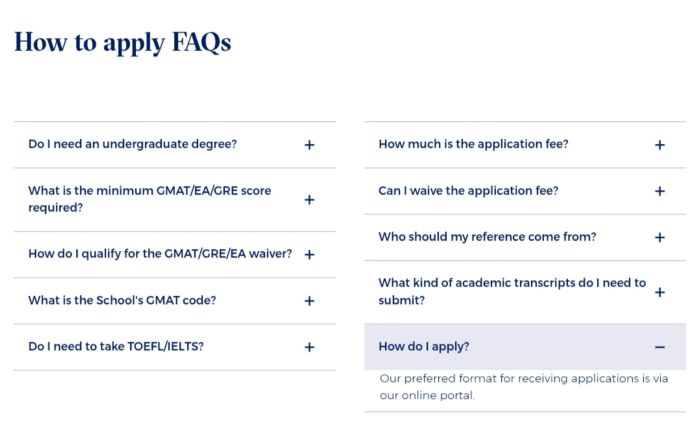

Source: London Business School
How does a student portal improve the admissions process? A student portal automates manual tasks, improves application visibility, accelerates document collection, and enhances communication. This reduces staff workload and provides a seamless experience for students, resulting in higher conversion rates and faster admissions cycles.
Once a student decides to apply, the expectations only grow. They want simplicity. They want speed. And they want control.
A modern student portal delivers all three by centralizing the application process into a single, intuitive interface. Students can:
Example: Keio Academy of New York (a boarding school with students from over 30 countries) manages its intake via a dedicated Admissions Portal. Applicants create an account and complete all steps through the portal, downloading required forms and submitting their documents online. Importantly, exam results and admission decisions are posted on Keio’s portal as well; they do not send results by postal mail.


Source: Keio Academy of New York
Example: University of British Columbia’s Applicant Service Centre provides a 24/7 window into one’s application. Applicants can log in to see real-time status updates, upcoming deadlines, and any outstanding items or fees needed to complete their file. Once admitted, UBC uses the same portal to guide students through the next steps: from accepting the offer online to planning finances and registering for courses, each step is laid out in order.


Source: University of British Columbia
Portals also cut down administrative chaos on the backend. Admissions teams benefit from CRM and SIS integration, automated workflows, and centralized communication tools. Instead of wasting time on data entry or chasing down missing documents, staff can focus on what matters: building relationships.
With centralized, automated workflows, institutions can save time and resources and improve tracking and reporting for better decision-making.
Here’s a critical truth: admissions doesn’t end with an acceptance letter.
There’s a critical period between “You’re in!” and “I’m enrolled.” This is where many institutions experience summer melt: when admitted students silently drift away before showing up on campus.
A modern portal helps close that gap. Once accepted, students often get access to a new-student dashboard with a personalized checklist:
The portal handles checklists, deadlines, and reminders, so students stay on track and don’t ghost between acceptance and enrollment.
Schools that automate this process don’t just reduce summer melt. They create a sense of structure, confidence, and connection before students even arrive.
Each task is tracked. Each deadline is visible. And the portal nudges students forward with timely reminders via email, text, or even WhatsApp.
And it’s not just about logistics. Portals can foster community through:
Example: Loyola Marymount University takes engagement a step further with its “Future Lions” portal for admitted students. LMU’s portal serves as a one-stop welcome platform: new Lions are reminded to log in regularly for important enrollment information, access orientation resources, and even find roommates through a dedicated matching system. By consolidating these tools, LMU’s portal is actively building a community, connecting future classmates and helping them feel at home before they even set foot on campus.
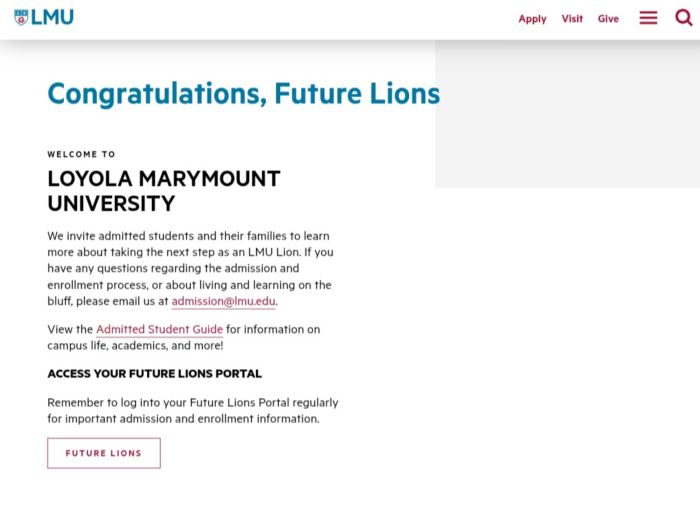

Source: Loyola Marymount University
What features should I look for in a student portal? Look for CRM and SIS integration, mobile optimization, multilingual support, payment processing, real-time messaging, automated reminders, customizable dashboards, and secure document uploads.
These are the features you can’t compromise on:
Students are on their phones, and your application process better be, too. Forms should adapt to any screen size, load quickly, and allow uploads and progress saving without hassle.
Example: Concordia University (Canada) recently replaced its old applicant site with a unified Student Hub that offers single sign-on access to all student services – from applications to course registration – in one convenient interface. This new portal features a more modern user interface and is fully mobile-responsive.
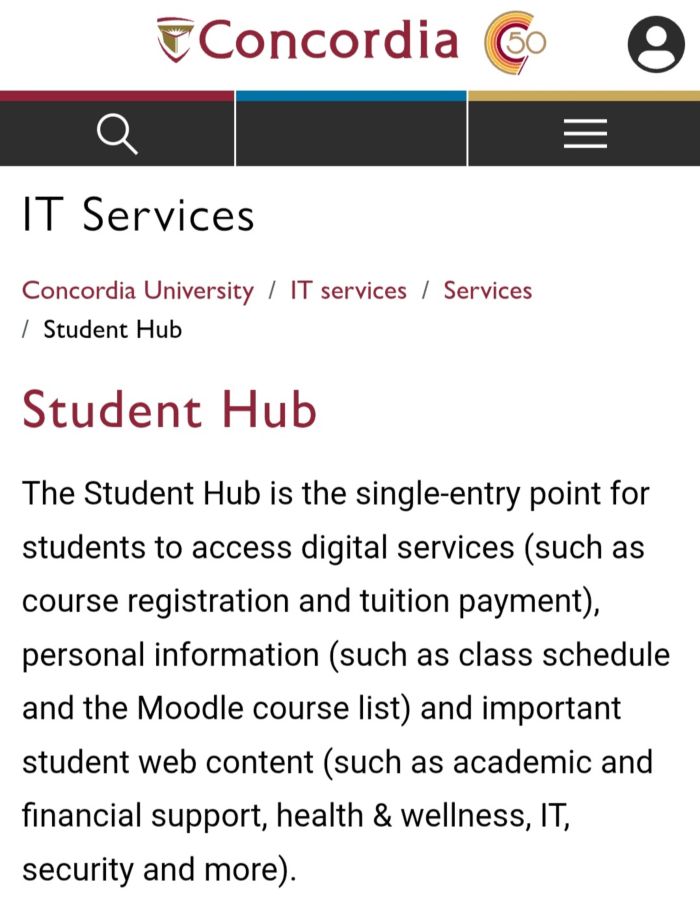

Source: Concordia University
Your portal should talk to your CRM in real time. Every form submission, download, or contact should create or update a record automatically, so no prospect slips through the cracks.
Example: Georgia State University’s admissions portal doesn’t stop at the acceptance letter; it presents each admitted student with a personalized “Next Steps” checklist to smoothly transition them toward enrollment. Upon acceptance, students unlock an Intent to Enroll form in their status checklist, allowing them to confirm their enrollment online without delay. All subsequent requirements – from submitting final transcripts to signing up for orientation – are tracked through the same portal, so nothing falls through the cracks.
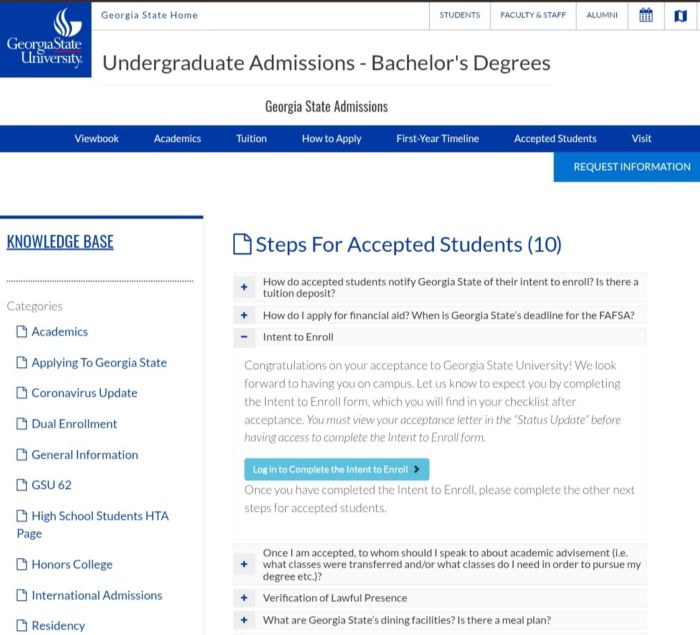

Source: Georgia State University
From applicant to enrolled student, data should flow seamlessly. Integration with your SIS means no double entry and a smoother transition into class registration, billing, and campus life.
Example: The University of Melbourne provides a one-stop solution through its portal. This student portal provides a single place for students to manage course administration and university life. In practice, that means a student logs into one dashboard for everything: enrolling in classes, viewing schedules, checking financials, and accessing support resources.
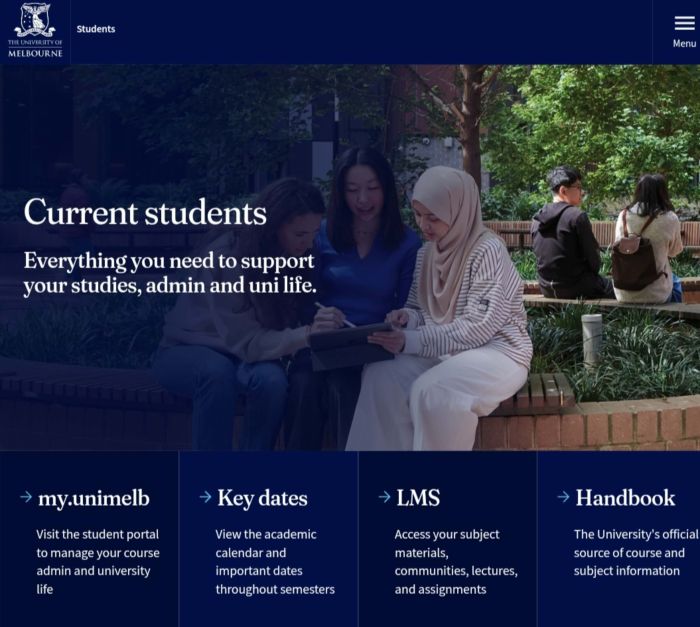

Source: University of Melbourne
Set up triggers for missing documents, incomplete applications, or upcoming deadlines. Automated nudges keep students moving forward and reduce the load on your staff.
Meet students where they are: email, SMS, chat, ideally all three. Your portal should support direct messaging, automatic confirmations, and personalized updates through multiple channels.
Students hate waiting in the dark. Let them see whether their application is submitted, under review, or accepted, along with their checklist status and next steps.
Example: The University of Toronto directs every applicant to its “Join U of T” portal, where they can track application status, upload documents, and receive admission decisions all in one place. About a week after applying, students get instructions to access the portal and are told to check it regularly for status updates, required documents, and eventual offers. In fact, U of T applicants even accept their offers of admission through the portal instead of mailing forms.


Source: University of Toronto
From transcripts to ID cards and essays: make it simple and safe for students to submit everything online. Support all common file formats and include e-signing where needed.
Admissions, faculty reviewers, and financial aid each group needs the right level of access. Role-based permissions let your team collaborate efficiently without compromising security.
If you’re enrolling global students, your portal should handle different time zones, document types, phone number formats, and (ideally) multiple languages.
Example: The International Language Academy of Canada (ILAC), which enrolls students from dozens of countries in its English programs, emphasizes a fully digital application. Prospects are invited to “start your journey” by completing ILAC’s online form and making a payment, after which they receive an electronic letter of acceptance needed for visa processing; no paper forms or international mail delays.
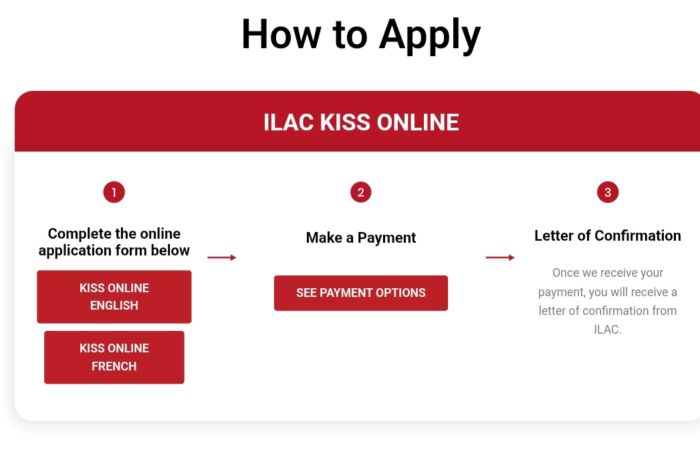

Source: ILAC
The portal shouldn’t stop working after admission. Use it for onboarding: orientation sign-ups, housing applications, deposit payments, and beyond. A one-stop platform improves both experience and yield.
A quick rule of thumb is, the more customizable and connected your system, the more you can reduce friction and boost results.
Example: Northwest Career College in Las Vegas is a more intimate vocational school that prides itself on personal guidance. Their admissions process blends human interaction with digital convenience: a prospective student first speaks with an admissions advisor (often by phone or in person) and only then receives an invite to the online student portal to formally apply. In doing so, Northwest ensures that every applicant gets one-on-one support in navigating requirements, while the portal handles the data capture, document uploads, and progress tracking in the background.
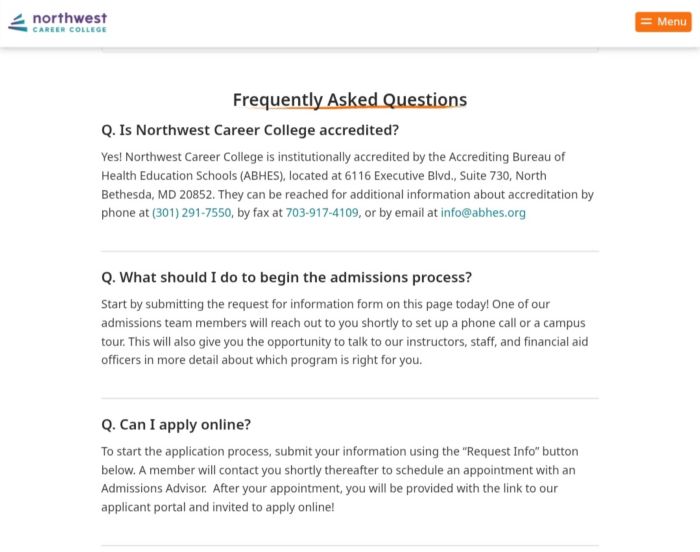

Source: Northwest Career College
At Higher Education Marketing, we’ve built HEM-SP. A purpose-built student portal that integrates CRM for higher education, student enrollment systems, and behavioral analytics. It enables institutions to centralize data, improve the student experience, and meet digital expectations.
Request a free demo here!
Implementing a student portal isn’t just a digital transformation; it’s a mindset shift.
You’re not just moving forms online. You’re creating a student-centric experience that matches the speed and personalization of the rest of their digital life. That makes your school more attractive, more trustworthy, and ultimately more successful.
In the era of digital admissions, a student portal is no longer a luxury; it’s rapidly becoming a standard. Institutions that modernize are already seeing:
Those that don’t? Risk losing applicants to schools that are simply easier to work with.
From the first click to the first day, every moment matters. A student portal connects those moments into one seamless experience.
It’s the digital front door. The application guide. The welcome mat. The checklist. The counselor. The map.
When built right, it becomes more than software; it becomes part of your institutional promise: we’re here to make your education journey clear, personal, and achievable. Do you want help evaluating or implementing a student enrollment system that works for your institution? Get a free demo and see what HEM’s Student Portal can do for you today!
Question: What is the purpose of a student portal?
Answer: A student portal provides a centralized, secure platform for applicants and students to access essential services, like submitting documents, tracking applications, receiving updates, and completing enrollment tasks, streamlining communication between the institution and the student.
Question: How does a student portal improve the admissions process?
Answer: A student portal automates manual tasks, improves application visibility, accelerates document collection, and enhances communication. This reduces staff workload and provides a seamless experience for students, resulting in higher conversion rates and faster admissions cycles.
Question: What features should I look for in a student portal?
Answer: Look for CRM and SIS integration, mobile optimization, multilingual support, payment processing, real-time messaging, automated reminders, customizable dashboards, and secure document uploads.

Seattle, Wash.– As thousands of university students graduate each year, many find themselves
facing an unexpected challenge: career uncertainty. Despite earning degrees, a large portion of
graduates report feeling unprepared to enter the workforce. Post-college career expert Laurie
Nilo-Klug is tackling this issue head-on, providing students with the tools they need to build
confidence and thrive in their careers.
Ms. Nilo-Klug, an Adjunct Professor at Seattle University and the founder of Post College
Journey, has dedicated her work to helping students transition from college to the professional
world. Through her programs, Laurie has empowered students to take control of their career
paths, addressing common issues such as imposter syndrome, skill uncertainty, and job market
navigation.
After implementing her career confidence-building tools in the classroom, Laurie observed a
remarkable 60% increase in student confidence levels. “Many students leave college with
impressive degrees but lack the self-assurance to effectively launch their careers.
My goal is to bridge that gap with actionable strategies that instill confidence and competence,” says Laurie. Laurie explains, “In a recent assignment, I had students choose two career exploration activities, and their selections revealed a strong drive to connect classroom learning with their post-college goals.
Their enthusiasm for hands-on experiences, such as job applications and simulations, highlighted the critical need for practical, real-world learning opportunities. After gathering student feedback and analyzing the data, I found a 60% increase in their career confidence levels. This reinforced my belief that early and direct exposure to career exploration is essential for student success.”
In this activity, students were tasked with selecting two career exploration activities from the
following options:
● Attending a career development event;
● Having an appointment with the career center;
● Joining a student club;
● Doing a career self-assessment
● Applying to a job;
● Or completing a job simulation and then reflecting on what they have learned.
This assignment aimed to show that career development offers many paths, so it’s crucial to
understand why you choose an activity, what you hope to gain, and reflect on what you learn.
Laurie expected students to pick low-effort options like self-assessments or joining a club, given
their frequent concerns about time constraints. Instead, nearly all chose job simulations or
applied for a job, showing a strong preference for hands-on experience.
For media inquiries or to schedule an interview with Laurie Nilo-Klug, please contact:
Marisa Spano
[email protected]

It’s been a while since we did an episode looking at the higher education system of a far-flung corner of the world. Recently I was perusing the pages of International Higher Education, a wonderful quarterly publication out of Boston College, and I saw a great little article about the challenges facing Mongolian higher education, and I knew this was something we had to cover on the podcast.
Unless you spend a lot of time reading about the Chinggis Khan Empire, or in my case, watching the upper echelons of professional Sumo, my guess is you probably don’t think about Mongolia that often.
As a state it’s only a little over a century old, a child of the disintegration of the Chinese empire, which found protection under the Soviet banner. Its fortunes, both as a country and as a higher education system, therefore, look a lot like those from the further flung stands of Central Asia — that is seriously under-resourced and heavily influenced by a Russian model, which splits teaching and research into two very different buckets.
Today my guest is Dendev Badarch, a professor at the Mongolian University of Science and Technology in Ulan Bator, and one of the co-authors of that IHE article. He has an interesting take on the current situation in Mongolia and the likely keys to the system’s future success as the country moves towards upper-middle-income status and deals with the challenge of becoming a service economy.
But enough for me. Let’s turn it over to Dendev.
The World of Higher Education Podcast
Episode 3.24 | From Soviet Influence to Market Economy: Mongolia’s Higher Education Journey
Alex Usher (AU): Let’s start with a brief history of Mongolian higher education. You’re from the oldest university in the country, and the National University of Mongolia is only about 80 years old, founded in 1942, if I’m not mistaken. My guess is that, at the start, the system would have been heavily dependent on the Soviet model.
How did higher education develop during the socialist period up to the late 1980s? Beyond training government cadres, what industries was it designed to support, and how quickly did Mongolian become the primary language of instruction?
Badarch Dendev (BD): First of all, thank you very much for inviting me to this podcast. Yes, you are correct—the Mongolian higher education system was heavily influenced by the Soviet system. The first university, the National University of Mongolia, was established in 1942, and its curriculum, structure, and administration closely followed the Soviet model.
To meet the needs of Mongolia’s planned economy, several small, specialized schools were established from the 1950s to the 1960s, including institutions for medical training, agriculture, teacher education, and polytechnic studies. These schools played a significant role in supplying specialists with the skills necessary to support the Mongolian economy.
In its early years, instruction at the university was conducted in Russian. However, as more Mongolian specialists graduated with higher education degrees, Mongolian gradually became the primary language of instruction. By the 1960s, many courses—particularly in the social sciences and humanities—were being taught in Mongolian.
AU: By the 1970s, Mongolia had a system that was producing professionals, and instruction was primarily in the Mongolian language. Then, at the end of the 1980s, there was a shift to a market economy, which must have had a profound impact on higher education. What were the biggest changes that occurred in that first decade of a market economy?
BD: The Democratic Revolution of 1989–1990 marked a historic transition in our country. We moved from a socialist one-party system to a multi-party democracy and a free-market economy. This shift led to significant changes in higher education.
In response to the pressure from the new democratic system, the government, in my opinion, took three key steps.
The first was significant changes to public institutions, reclassifying old public institutes as universities and giving them more authority. Mongolia faced economic difficulties at the time. Under socialism, higher education was fully funded by the government—covering tuition, student stipends, faculty salaries, and more. But after the transition to democracy, we faced a very difficult situation.
Second, under socialism, all higher education institutions were public. With the reforms, the government allowed the establishment of private universities and colleges, which significantly increased access to higher education.
The third major step was the adoption of Mongolia’s first higher education law. These three key steps taken by the government shaped Mongolia’s higher education system as it exists today.
AU: What’s the division now between public and private higher education? In countries like China and Russia, maybe three-quarters of students are still in public universities, but there’s still a significant private or non-state sector that educates about a quarter of the students. Is that the case in Mongolia as well? How big is the private sector?
BD: You see, when the government made the decision to establish private institutions, there was a boom—a surge of small private colleges that had no infrastructure, no proper teaching facilities, and not enough qualified faculty. At one point, there were almost 200 private colleges.
But as of last year, the 2022–2023 academic year, we have 69 higher education institutions—19 public and 50 private.
However, in terms of student numbers, 60 percent of students are in public universities—because of reputation, infrastructure, and other factors. In total, Mongolia has about 145,000 students.
AU: My understanding is that both public and private institutions rely heavily on tuition fees, and that tuition fees are quite high. Is that good for financial sustainability, or does it create risks for institutions?
BD: Tuition fees are not high, but universities and higher education institutions depend almost entirely on tuition. About 90 percent of their income comes from tuition. There is no public funding—except for some government subsidies for students.
AU: So, in that situation, it’s not really a question of whether a high dependence on tuition is bad. If there’s no public subsidy, it’s simply the only way to operate, right?
BD: Yes. Exactly.
AU: Badarch, another critical function of universities is research. How does Mongolia compare internationally in terms of scientific research? What are the successes, and what are the biggest barriers to developing a stronger research culture?
BD: You know, from the beginning, Mongolian universities were primarily training institutions, not research institutions. But in the last 10 years, there has been significant investment in higher education, especially in public universities. For the first time, university professors have started publishing internationally. In fact, the five largest public universities now produce 65% of all internationally published research papers. However, in Mongolia, higher education and research have been separate from the start, following the Russian model.
AU: You would have an Academy of Sciences?
BD: Yes, research was traditionally conducted by the Academy of Sciences. But universities have received significant investment in research infrastructure. For example, the National University of Mongolia now has more than 40 research laboratories in fields like biology, environmental sciences, and even nuclear physics. The Mongolian University of Science and Technology has supercomputer laboratories and modern mechanical engineering facilities. In addition, we now have many graduates returning from foreign universities to work in Mongolian universities, and they are contributing to research.
But there are still major challenges. Universities do not receive sufficient research funding because most of the research budget goes to the Academy of Sciences. There is very little collaboration with industry and almost no funding from the private sector. There are also no endowment funds or other financial support systems for university research.
Another critical issue is the weak graduate programs. Almost 99% of graduate students are part-time—there are no full-time graduate students. This severely limits research output. Without strong graduate programs, research activity remains low. This is one of the biggest challenges for Mongolian universities.
AU: A couple of years ago, a set of laws were passed aimed at increasing university autonomy—governance, leadership selection, those kinds of things. Do universities now have real independence, or does political influence remain a challenge? And what did the laws do to promote political independence?
BD: Over the last three years, there were extensive discussions about the concept and details of these new laws. In July 2023, Parliament adopted a set of education laws. For the first time, these laws covered all levels of education as a single system, creating better interconnection between different stages of education. That is a very good sign.
Second, for the first time, the law explicitly recognized academic freedom as a key principle of higher education, which is another positive step.
The third important issue relates to governance. According to the law, if implemented correctly, universities should have independent governing boards. Another key aspect is the diversification of funding for universities, as well as strengthening university research. The law also states that public universities should receive government subsidies to help cover maintenance costs.
I think these are the positive aspects of the new law. However, in reality, the implementation of these important measures has not yet happened. Political interference still exists, particularly in the selection of university directors and key leadership appointments.
AU: We’ve talked a lot about the challenges in Mongolian higher education. What do you see as the opportunities? Where do you think the greatest improvements could happen in the next few years?
BD: Yes, there are definitely opportunities. First, universities are expanding their cooperation with international communities, and they are learning a lot from these collaborations. Also, as I mentioned earlier, we have a new wave of young specialists and graduates from world-leading universities. We need to hire them. If we bring in these young professionals, give them opportunities to conduct research, teach, and help reform higher education institutions, we will see positive changes soon.
Second, there is a major opportunity in digital technologies. If we use them smartly and correctly—things like AI, online learning, and MOOCs—then Mongolian universities can take a big step forward.
But in order to take advantage of these opportunities, we need to ensure that the new laws are properly implemented.
AU: If we think even further ahead, maybe to 2050, what do you think the system will look like? Will Mongolia have caught up with countries like China, Korea, or Japan? Do you think the system will have developed to the point where it can be considered alongside those peers?
BD: You may know that the government has adopted the “Vision 2050” long-term strategic development plan. According to this plan, by 2050, Mongolia should have one of the leading universities in the region.
I see two possible scenarios for the development of higher education in Mongolia by 2050—one optimistic and one pessimistic.
Starting with the optimistic scenario: If we can reduce government and political interference in university governance and give universities full autonomy, that would be a big step forward. The government should also increase its support for universities, establish strong links with industry, and adopt models like the triple helix approach. Additionally, partnerships with leading international universities would help improve graduate programs.
If these changes happen, Mongolia could develop strong higher education institutions. But right now, many of the most talented secondary school students are not choosing local universities—they are looking abroad for their education.
The pessimistic scenario is that if things continue as they are today, universities will still exist, but they will lack freedom and independence. The issues we are currently facing—political interference, funding limitations, and weak institutional autonomy—will persist. That would be very unfortunate. However, I hope that we will see changes in government policy and that Mongolia will implement best practices from other higher education systems around the world.
AU: Thank you so much for joining us today.
BD: Thank you.
AU: And before we go, I’d like to thank our excellent producers, Tiffany MacLennan and Sam Pufek, as well as our listeners, viewers, and readers for tuning in. If you have any questions or comments about today’s podcast, please don’t hesitate to contact us at [email protected]. If you’re worried about missing an episode of The World of Higher Education, why not subscribe to our YouTube channel? Go there today—don’t delay—never miss an episode!
Join us next week when our guest will be Steven Mintz, a professor of history at the University of Texas at Austin. We’ll be discussing his new book, The Learning-Centered University. Bye for now.
*This podcast transcript was generated using an AI transcription service with limited editing. Please forgive any errors made through this service. Please note, the views and opinions expressed in each episode are those of the individual contributors, and do not necessarily reflect those of the podcast host and team, or our sponsors.
This episode is sponsored by Studiosity. Student success, at scale – with an evidence-based ROI of 4.4x return for universities and colleges. Because Studiosity is AI for Learning — not corrections – to develop critical thinking, agency, and retention — empowering educators with learning insight. For future-ready graduates — and for future-ready institutions. Learn more at studiosity.com.
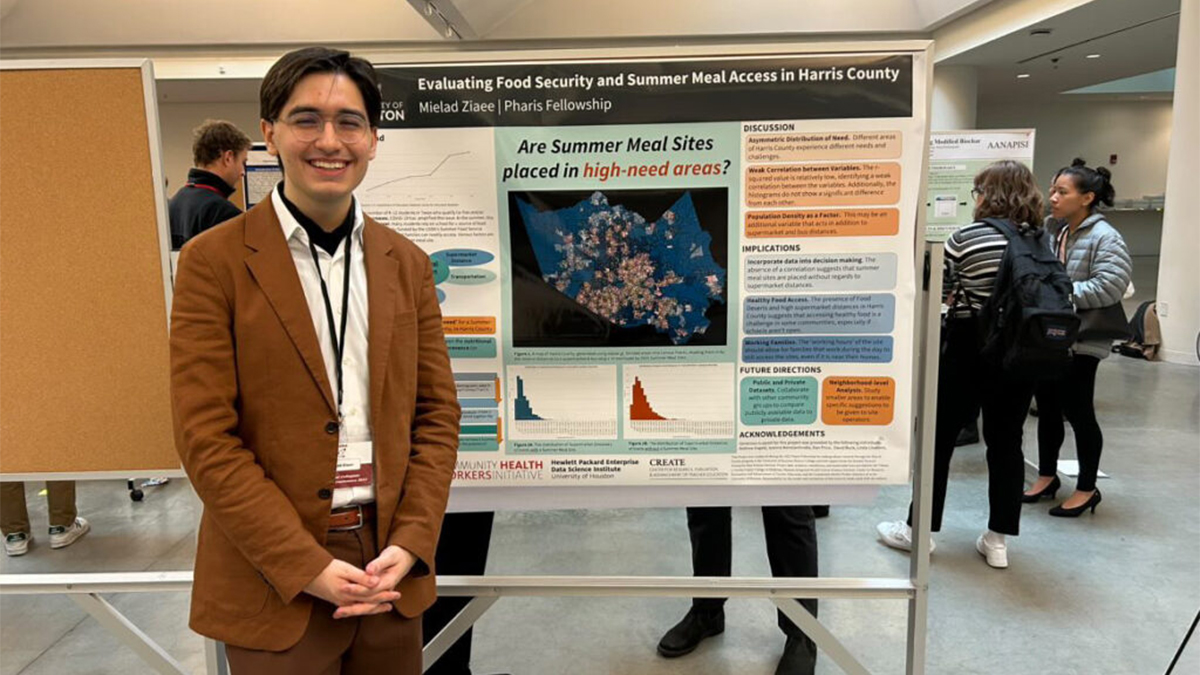
Mielad Ziaee
Healthcare is constantly evolving, and the future of the industry depends on the next generation of skilled professionals who are prepared to lead with knowledge, innovation, and compassion. Organizations like HOSA-Future Health Professionals play a critical role in shaping these future healthcare leaders by providing students with the resources, experiences, and mentorship needed to thrive in various medical and health-related careers.
HOSA is an international student organization dedicated to empowering young people who are passionate about healthcare. Through leadership development, competitive events, networking opportunities, and hands-on learning experiences, HOSA helps students build the essential skills they need to succeed in the medical field. Members engage in real-world healthcare scenarios, gain exposure to public health initiatives, and develop professional competencies that set them apart in their future careers.
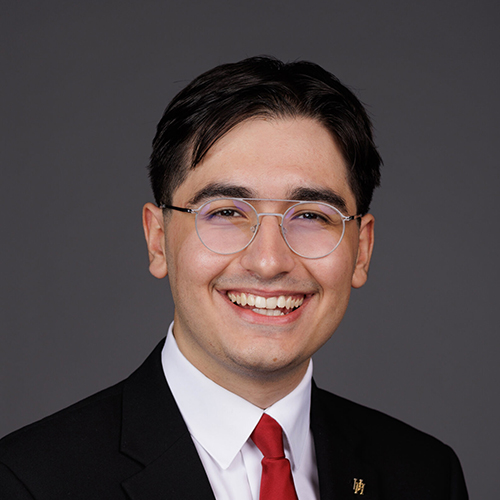
Alumni and Former International Executive Council Member, HOSA-Future Health Professionals
One such success story is Mielad Ziaee, a Marshall Scholar, Truman Scholar, public health advocate, and innovator. Ziaee’s parents immigrated from Iran to the United States to manifest a new life. Their resilience and perspective deeply influenced his understanding of community, determination, and health from an early age. Before hitting the labs of prestigious institutions, Ziaee joined HOSA as a high school freshman thanks to their support. He saw it as a promising steppingstone to engage in his healthcare aspirations.
“I really wanted to hit the ground running with HOSA. It was so empowering to have [an organization] created for students interested in healthcare, where we could all sort of geek out together,” Ziaee recalled.
His two advisors, Angela Vong and Zenia Ridley, provided mentorship and guidance to immerse Ziaee in all HOSA could offer. His leadership journey quickly unfolded — from member to area officer, to Texas state officer, and eventually, to serving on HOSA’s International Executive Council. His tenure coincided with the challenges of the COVID-19 pandemic. Finding creative ways to engage members across middle school, high school, and college in virtual settings connected the dots between leadership and innovation.
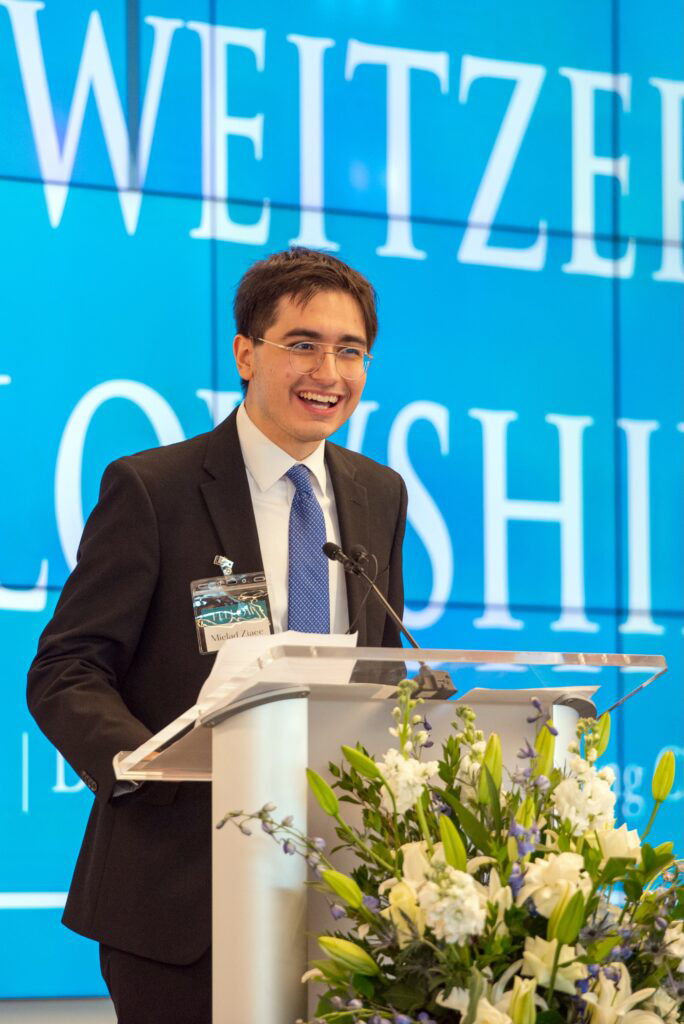
“Being part of the ‘COVID generation’ was both challenging and inspiring,” Ziaee shared. “It taught me how to build community and how that community can enact change.”
Ziaee’s experiences ignited a passion for research, where he found the intersection of policy, public health, technology, and community engagement. In particular, food insecurity has become a focal point of his academic work.
“I’m a proud Houstonian. I go to the University of Houston, so one of the biggest challenges that my community faces is food insecurity,” Ziaee said. “I work with our Data Science Institute to try to understand both technological and community-based cultural approaches to food insecurity. A lot of the skills I learned in HOSA, like Zoom calls or identifying key problems and addressing them, are the same things I do in my research — just different vocabulary.”
Ziaee will continue his study of public health as a Marshall Scholar at the University of Edinburgh this fall. He beamed with excitement as he described studying at an institution that nurtured scientific legends such as Charles Darwin and Alexander Graham Bell and exploring Scotland’s unique healthcare system.
“Edinburgh, specifically, is where they did the Dolly the Sheep experiment, which is super cool,” Ziaee said. “It’s very interesting as an American to see how they’re doing things [in Scotland], and to hopefully bring that back and promote policy innovation here in public health.”
Reflecting on his journey, Ziaee underscores the importance of seizing opportunities and embracing HOSA as more than just an organization. As Ziaee embarks on this next chapter, his story exemplifies how HOSA-Future Health Professionals and strong family values can shape a life of innovation and impact. Following in his footsteps, his younger sister has now joined HOSA, continuing the family’s commitment to making a difference in healthcare.
“The connections and experiences you gain will inspire and guide you for years to come. It’s one of the main constants in my life,” he said.
Ziaee’s journey highlights that HOSA is more than just a steppingstone — it’s a foundation for lifelong growth, leadership, and meaningful connections. For students aspiring to make a difference in healthcare, organizations like HOSA offer an unparalleled opportunity to gain real-world experience, develop leadership skills, and join a network of like-minded individuals committed to improving health outcomes worldwide.
To join this inspiring legacy, become part of the HOSA alumni network today at www.hosa.org/alumni.

In higher education organizations, enrollment management plans can be like the weather: short term, ever changing, and subject to the whims of the seasons each year.
But for your organization and programs to thrive no matter the conditions, a multiyear growth road map is needed to keep all parts of the organization aligned and moving toward a strategic set of goals.
In my last article, I discussed the importance of taking a step back to assess the people, processes, and technology of your organization to identify opportunities for improvement and high-quality growth. This critical first step results in an organizational development plan that moves your institution from good, to better, to best in class.
With this article, we’ll dig deeper to outline how you can build a multiyear growth road map that allows you to weather everything from regulatory storm clouds to enrollment droughts, keeping your focus on a longer-term strategy. You’ll learn how to get started, measure your progress, and ensure that feedback loops are in place for continuous improvement.
A multiyear growth road map helps your teams move beyond term-to-term thinking to develop activities that ladder up and contribute to a true organizational vision. Everyone has a part to play that is specific, measured, and celebrated.
As with any effective plan, laying a strong foundation can lead to long-term success. In the context of your multiyear strategic road map, building the foundation involves these steps:
With a solid understanding of your institution’s current landscape — both internally and externally — it’s time to launch into the first year of your strategic road map. These 365 days are about implementing basic changes to boot up the structures, systems, and processes that will support growth in later years.
With a firm foundation now in place from your first year’s efforts, the focus shifts toward refinement, optimization, and acceleration of your growth initiatives. This phase is crucial, as it’s where you begin to see the fruits of your labor blossom.
As your strategic initiatives mature, the focus will naturally transition toward sharing knowledge and strengthening your internal teams. This critical period in years three and four is about empowering your staff and shifting your role from hands-on implementer to guiding coach.
Successful organizational development requires a multiyear effort that encompasses careful planning, precise execution, and a dedicated team of leaders. From the initial 90 days to the subsequent years, each phase of the process moves your institution closer to becoming stronger and more agile.
Our team at Archer Education has helped dozens of institutions build and execute comprehensive multiyear strategic plans. These plans are tailored to enhance enrollment and retention, setting each institution on a path to long-term success.
If you’re ready to transform your organization and achieve remarkable results, reach out to us at Archer Education. Let’s make your educational vision a reality together.
Melanie Andrich is vice president of strategy and development at Archer Education. Melanie is a results-driven higher education leader with 20-plus years of experience in developing and supporting high-quality, accessible, and scalable academic programs and services. She spent the first half of her career at Rutgers University running study abroad programming and leading the first fully online professional master’s degree program for the university. She then moved into management consulting to help colleges and universities with academic innovation, enrollment management, and organizational transformation initiatives.

In higher education, the enrollment funnel can feel like a battleground for institutions vying to convert interest into commitment.
Traditionally, the enrollment funnel has been viewed simply: attract, engage, and enroll. But the modern student’s journey is anything but straightforward — it’s a complex, winding path influenced by numerous digital touchpoints and personalized interactions.
The health of the enrollment funnel extends beyond mere numbers; it represents the institution’s ability to connect with prospective students through every phase of their decision-making process. With technology reshaping expectations and behaviors, colleges and universities must not only catch the eye of prospective students but also keep them engaged through multiple channels and strategies.
This article unpacks key elements of the enrollment and admissions funnel, offering actionable insights and innovative tips to capture and retain students’ attention from their first inquiry through their enrollment stages. As we explore these strategies, you’ll discover the vital role that continuous, tailored engagement plays in transforming interest into activity, setting the stage for a successful educational journey.
Today’s students embark on their educational journeys equipped with a wealth of information and digital tools at their fingertips, making their paths to enrollment more complex and multifaceted than ever before.
The student journey is far from linear. It involves numerous interactions across various platforms and touchpoints. Each student’s path is unique and influenced by personal, financial, and academic factors.
For instance, a modern student, such as a working professional returning to education or a parent seeking to balance family responsibilities with schooling, may have different priorities and use different resources compared to a younger, first-time college student.
Technology has diversified the ways students gather information, and also how they engage with institutions. Prospective students might start their journey by conducting a simple Google search, but they will also often visit social media platforms, participate in virtual campus tours, and attend online webinars before starting their application. During this time, they are continuously evaluating their options and being influenced by each interaction they have with a school’s digital presence.
The proliferation of digital platforms has dramatically altered the student journey, both for students and institutions, in ways such as the following:
Given these technological influences, it is essential for educational institutions to adapt their enrollment strategies to meet the changing behaviors and preferences of modern students. Integrating data analytics, enhancing digital communication channels, and providing personalized experiences are all critical to effectively engaging with prospective students throughout their decision-making journey.
The enrollment and admissions funnel is a foundational concept in higher education marketing that illustrates the progressive stages a student navigates, from awareness through enrollment. The funnel is not just a theoretical model but a practical guide for shaping effective engagement strategies.
The enrollment funnel can be divided into several key stages, each requiring specific strategies to move prospective students to the next step:
A deep understanding and effective management of the enrollment and admissions funnel is crucial for any educational institution aiming to increase its student body. Let’s see how it’s done.
Maintaining the attention of prospective students throughout their educational journey is crucial for successful enrollment. Here are key strategies to keep students engaged from initial inquiry through enrollment:
Leverage multiple channels to engage with students to ensure your institution remains top of mind. Implement a mix of digital and traditional marketing strategies to reach students where they are most active, such as the following:
Tailor your communications to meet the specific needs and interests of each prospective student, and utilize data from their interactions with your digital content to personalize messages. Strategies to achieve these goals include the following:
Create a sense of urgency and motivation by offering incentives that encourage prospective students to take the next step:
Foster a sense of community and belonging from the first interaction through forums such as the following:
Regularly assess and refine your engagement strategies based on feedback and analytics tools and processes:
The landscape of higher education is competitive, but the enrollment funnel could be your institution’s edge. By engaging prospective students at every stage of their journey with tailored strategies and personalized communications, institutions can significantly enhance their enrollment rates. If you’re ready to elevate your enrollment marketing strategies, Archer Education is here to take you to the next level. Reach out to us, and let us help you create a robust enrollment funnel that not only attracts but also converts prospective students into committed learners.
John Van Fleet is the Chief Marketing Officer at Archer Education. With more than 20 years of experience in higher ed marketing, John has a continuous track record of successfully supporting institutional growth.